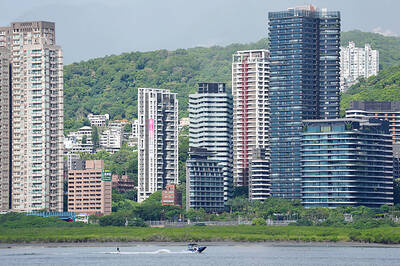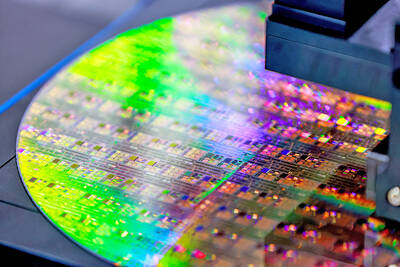LG Display Co, the world’s second-largest manufacturer of liquid-crystal-display (LCD) panels, lowered its profitability forecast for the fourth quarter, citing a larger-than-expected decline in panel prices amid the global recession.
Earnings before interest, taxes, depreciation and amortization would be in the “low to mid-teens” percentage of sales, Seoul-based LG Display said yesterday in an e-mailed statement. The company in October said it expected the margin would be a “low 20s” percentage.
LG Display joins AU Optronics Corp (友達光電) and Chi Mei Optoelectronics Corp (奇美電子), Taiwan’s biggest LCD makers, in cutting forecasts for the current period because of weaker demand and falling prices.
LG Display expected that its factory usage would be about 80 percent of full capacity in the fourth quarter as the company plans to “respond flexibly to market situations,” chief financial officer James Jeong said in the statement.
Fourth-quarter shipments would increase by a “low single-digit” percentage from the previous three months, less than an initial forecast for a “low to mid-teens” percentage increase, LG Display said.
Panel prices would fall by a “low 20s” percentage from three months ago, more than the “high single digit” decline it previously projected, the company said.
On Monday, AU Optronics and Chi Mei Optoelectronics also lowered their forecasts for shipments in the fourth quarter. Shares of the two Taiwanese firms rose limit-up at NT$22.05 (US$0.66) and NT$10.05, respectively, in Taipei yesterday.

Taiwan’s rapidly aging population is fueling a sharp increase in homes occupied solely by elderly people, a trend that is reshaping the nation’s housing market and social fabric, real-estate brokers said yesterday. About 850,000 residences were occupied by elderly people in the first quarter, including 655,000 that housed only one resident, the Ministry of the Interior said. The figures have nearly doubled from a decade earlier, Great Home Realty Co (大家房屋) said, as people aged 65 and older now make up 20.8 percent of the population. “The so-called silver tsunami represents more than just a demographic shift — it could fundamentally redefine the

The US government on Wednesday sanctioned more than two dozen companies in China, Turkey and the United Arab Emirates, including offshoots of a US chip firm, accusing the businesses of providing illicit support to Iran’s military or proxies. The US Department of Commerce included two subsidiaries of US-based chip distributor Arrow Electronics Inc (艾睿電子) on its so-called entity list published on the federal register for facilitating purchases by Iran’s proxies of US tech. Arrow spokesman John Hourigan said that the subsidiaries have been operating in full compliance with US export control regulations and his company is discussing with the US Bureau of

Businesses across the global semiconductor supply chain are bracing themselves for disruptions from an escalating trade war, after China imposed curbs on rare earth mineral exports and the US responded with additional tariffs and restrictions on software sales to the Asian nation. China’s restrictions, the most targeted move yet to limit supplies of rare earth materials, represent the first major attempt by Beijing to exercise long-arm jurisdiction over foreign companies to target the semiconductor industry, threatening to stall the chips powering the artificial intelligence (AI) boom. They prompted US President Donald Trump on Friday to announce that he would impose an additional

Pegatron Corp (和碩), a key assembler of Apple Inc’s iPhones, on Thursday reported a 12.3 percent year-on-year decline in revenue for last quarter to NT$257.86 billion (US$8.44 billion), but it expects revenue to improve in the second half on traditional holiday demand. The fourth quarter is usually the peak season for its communications products, a company official said on condition of anonymity. As Apple released its new iPhone 17 series early last month, sales in the communications segment rose sequentially last month, the official said. Shipments to Apple have been stable and in line with earlier expectations, they said. Pegatron shipped 2.4 million notebook